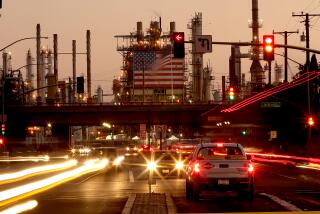Environmental Purity Can Cost Too Much
- Share via
We’re afraid that when this column appears, our neighbors, friends and even our children may stop talking to us. That’s because we’re about to confess our feeling that public opinion has gone overboard on environmental protection.
A national opinion survey that has been tracking public attitudes on pollution reported recently that almost 80% of Americans agree with the following statement: ‘Protecting the environment is so important that requirements and standards cannot be too high, and continuing environmental improvements must be made regardless of cost.’
We disagree. Some pollution should be tolerated in modern society, because the costs of eliminating pollution cannot and should not be disregarded. There are too many worthy social goals that must compete with protecting the environment.
Don’t get us wrong. We hate pollution. We don’t like the foul smells, the burning eyes, the sore throats and the damage to lakes and forests that pollution can bring. We are concerned about unsuspected health risks and we care about the environment in which our grandchildren will live.
Nor are we opposed to government standards and requirements for industry. Controlling pollution is a proper role for government. Government regulation is needed when firms do not bear the full costs of their actions. A firm that pumps sulfur dioxide or other toxic compounds into the air or water does not bear the consequences. The costs and risks may be borne by individuals thousands of miles away who have no way to force the polluting firm to stop its practices or to compensate its victims for the damage they suffer.
So we share the conviction that pollution should be reduced and that government has to guide that process. But we recognize also that reducing pollution is not cost-free. The more resources that are devoted to pollution reduction, the fewer are the resources that will be left over for other social goals including education, housing and improvements in public facilities of all kinds.
When 80% of Americans support environmental improvements regardless of cost, many of the respondents must assume that someone else will be paying for those improvements. But, of course, the average American consumer and taxpayer will be the one to pay. That’s true not just when the cost is in the form of higher taxes to pay for cleaning up the environment. It’s just as true when the cost shows up in higher prices to consumers for electricity, cars or dry cleaning. The higher prices inevitably follow when firms face higher costs in order to meet higher environmental standards.
These costs must be considered when policy-makers attempt to determine the right level for any type of pollution. An intelligent decision about the right level of pollution can be made only by balancing the effects of further pollution reduction on the environment and quality of life against the costs of those additional pollution reductions. The right level will rarely if ever be zero pollution. That’s why we disagree with the survey respondents so strongly.
Consider the emission of sulfur dioxide, the main cause of acid rain. About 20 million tons of sulfur dioxide are released into the atmosphere over the United States each year, primarily by the burning of fossil fuels in electric power plants.
The Bush Administration recently presented a plan to reduce annual sulfur dioxide emissions by 10 million tons by the year 2000. The reductions would come in two phases, with 5 million tons to be reduced during the first six years at an annual cost of $700 million. The second phase would extend to the year 2000 and would call for a further reduction of 5 million tons of sulfur dioxide plus 2 million tons of nitrogen oxide at a total annual cost of $3.8 billion. While there are many reasons why the annual costs may not be exactly comparable, it is clear that the second phase would be much more expensive per unit of pollution reduction.
If it costs even approximately five times as much to get the additional 7 million tons of reduction, imagine how high those costs could reach to eliminate the remaining 10 million tons of sulfur dioxide from the environment. Remember that each additional ton reduced becomes more costly than the last one.
The American voter should expect the Administration and Congress to be weighing the alternative uses of the billions of dollars that this program is going to cost. And policy-makers in Washington should inform the voters of the trade-offs that are involved.
The Environmental Protection Agency has estimated that the entire Bush clean air program, when fully implemented, could cost $14 billion to $18 billion annually for industry to comply. That’s OK as long as the American public feels that environmental protection is more important than other uses for those resources. The surveys show that the American public does support the environment, but let’s hope that no one takes seriously the idea that the cost of environmental protection can be disregarded.
More to Read
Sign up for Essential California
The most important California stories and recommendations in your inbox every morning.
You may occasionally receive promotional content from the Los Angeles Times.













